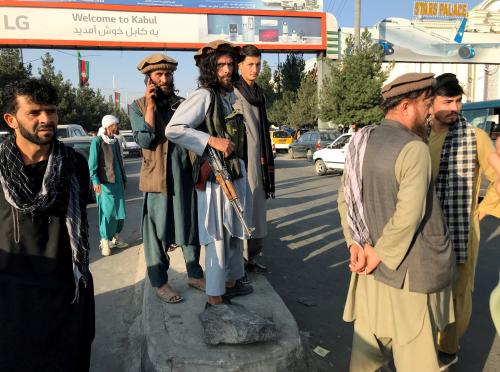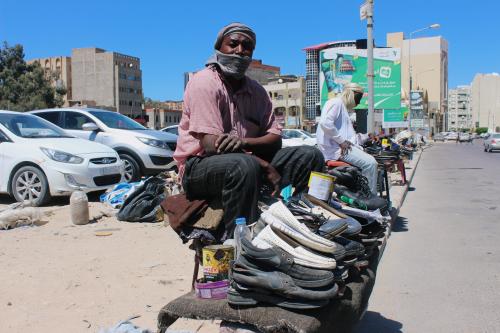On October 21, the Brookings-LSE Project on Internal Displacement (IDP Project) and IMA World Health hosted a discussion on the role of the United States government, the United Nations, and other key actors in combating sexual violence in conflicts. Megan Bradley, a fellow with the IDP project, moderated the discussion.
Dr. Denis Mukwege, a physician and human rights activist from the Democratic Republic of Congo, began the discussion with a description of the pervasive nature of sexual violence both in conflict ridden countries and those closer to home. In America, 70 percent of young women and girls will be the victims of sexual violence at least once in their life, he said, pointing out that the numbers in Africa would be much higher. He also advocated for a broader understanding of rape—it is not merely a sexual relationship without consent, “it is an attack an aggression, of the most intimate part of a person … a war crime, a crime against humanity.” Dr. Mukwege emphasized that it is an attack both on the individual victim and the fabric of that society. Mukwege advocated a holistic response that would help both the direct and indirect victims—the children of rape, witnesses and community—by addressing all aspects of the trauma created by rape. Medical and psychological aid must be provided.
Ambassador Melanne Verveer, executive director of the Georgetown Institute for Women, Peace and Security, provided a list of obstacles that hinder progress in preventing and responding to sexual violence:
1. Sexual violence is linked to peace and security. “We cannot separate women’s security from overall security.”
2. Women must have a role in addressing the problem and providing solutions. “We need to ensure that women have a seat at the table.”
3. Impunity for perpetrators must end and justice must be guaranteed to victims. More experts must be deployed to areas in need, the rule of law must be enhanced and more in-depth training for peacekeepers is required.
4. More data collection and evidence is needed in order to establish the best methods of response.
5. Finally, there needs to be more focus on reintegration efforts for victims to help women who have survived sexual and gender based violence go “from pain to power.”
Nancy Lindborg, USAID’s assistant administrator for the Bureau for Democracy, Conflict and Humanitarian Assistance, followed Verveer with a list of the solutions that are currently in effect. She specifically mentioned the United States Agency for International Development’s “Safe from the Start” protection initiative as well as generalized efforts to increase the evidence base for successful approaches to dealing with the situation, mainstreaming efforts through all humanitarian systems and advocating for sexual violence assistance with all initial humanitarian aid. In closing, Lindborg echoed Verveer by emphasizing that women must be a voice in both response and prevention.
Kathleen Kuehnast, director of the Center of Innovation for Gender and Peacebuilding at the United States Institute of Peace, closed the discussion with a broader take on the issue. She highlighted three pervasive misconceptions and the reality about sexual violence:
1. That sexual violence is only an African problem. Sexual violence occurs in all wars and in many areas without conflict.
2. That “We tend to think of [sexual violence] as some kind of rebel issue.” State forces in many instances are more likely to be the perpetrators of sexual violence. States also frequently use sexual violence as a form of torture.
3. Men are not only perpetrators but also victims. Women are not only victims but also perpetrators. This necessitates a holistic approach to stop all cycles of violence and the normalization of sexual violence as a power differential.
The panelists agreed that the issue of prevention and response to sexual violence should not create a division between men and women. Both need to work together both at the higher levels of political leadership and at the lower levels in the towns and communities affected by sexual violence.
Full event audio is now available.
Colleen Lineweaver contributed to this post.


Commentary
Sexual Violence in Conflict Is a Crime against Humanity
October 22, 2013